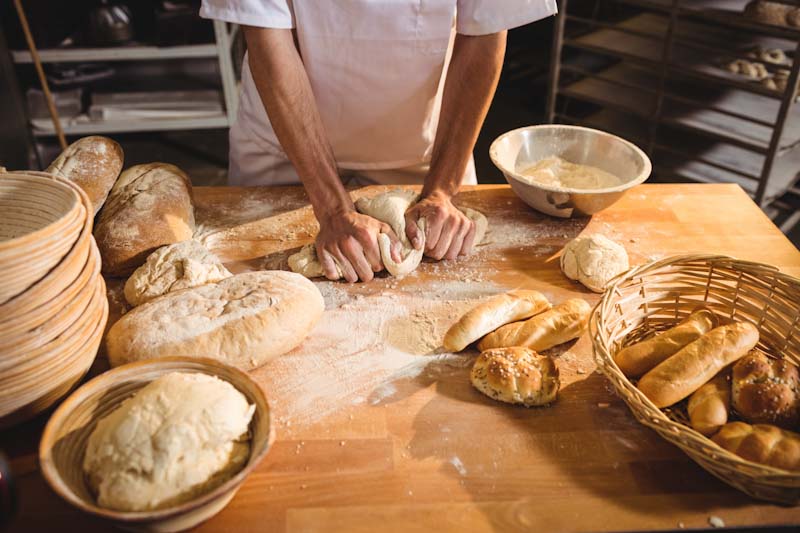While nationwide lockdowns caused by the COVID-19 pandemic impacted businesses all around the world in 2020, bakeries are an example of businesses that enjoyed an increase in demand.
According to the report by Mordor Intelligence about GCC Bakery ingredients market in 2021-2026, Saudi Arabians consume more bread per person than any other country. Bread is eaten with the main meal and can be dipped in gravy or used to hold meat and vegetables. The most popular bread in the UAE is tandoori bread, which is a single-layered flatbread baked in a shell oven and made of medium-hard wheat. When it comes to baked products, bread is the dominant category and this is expected to continue in the future.
To cope with increased demand, as well as handle any challenges that may come its way, the baking industry will have to embrace digital transformation.

WHICH PROCESSES CAN BE DIGITIZED IN BAKERIES AND WHICH PROBLEMS DO DIGITAL TRANSFORMATION SOLVE?
The following problems have become more common among bakeries:
- Printed menus aren’t recommended, due to COVID-19;
- High demand reflecting a high operational load
- Manual processes: order taking, recipe management, inventory, distribution, reports, etc.
- eCommerce channels are either not enabled or orders are received through third-party platforms, like social media, WhatsApp, aggregators, etc.
- No customer database analytics
- Little to no digital marketing activity
This is how digital transformation can solve the problems faced by bakeries outlined above:
- ONLINE MENUS: printed menus can be replaced by digital menus or a whole eCommerce website, which can be reached by scanning QR codes.
- OPERATIONS ANALYTICS AND PREDICTIONS: reduced by implementing a Kitech Display System (KDS) connected to Point of Sale (POS) and orders are distributed according to the assigned department. Through analytics with a Machine Learning algorithm, you can predict the demand and automate the planning of purchases and resources.
- AUTOMATED SALES AND PRODUCTION PROCESS: the order taking process is now digitized through a QR code menu, allowing dine-in customers to place their orders, pay online, add tips and split the bill. The tool can be linked with POS and orders may go straight to the kitchen and into the POS system. The recipe management system tracks the inventory of raw ingredients and produced goods, so you can spend on ingredients wisely and optimize the cost of your recipes by tracking the total cost of their production. Plus, you can automate demand planning and purchase orders to suppliers. Reports can be generated automatically at the end of the shift – day, week, month, etc., and capture various metrics, including top-selling products, high consumption, low demand etc.
- CUSTOMER RELATIONSHIP MANAGEMENT: Database tracking and analytics will help you better understand who your customer is, which characteristics they share, who else you should target and how to best reach them.
- SOCIAL MEDIA CAMPAIGN MANAGEMENT: By setting up the right marketing strategy on Google, Instagram, Facebook, TikTok, Snapchat, etc., you can reach out to your audience faster.

According to a report published by Technavio, the global bread market will increase by 5%, on average.
This growth in demand will require increased production capacity and the optimization of operations across all departments. We will see more technologies applied in bakeries, transforming traditional operations into new processes enhanced by digital solutions.
We will see more automation: more robotic machines, increased digitalization of existing processes and using modern hardware as a way to go paperless, supporting environmental sustainability.

Is it time your company also embraced digitalization? Do you have business processes that could be made far more efficient with a digital solution?
Get in touch with us and one of our experts would be happy to discuss potential solutions with you – and how they could increase your business’ productivity – and profitability.
